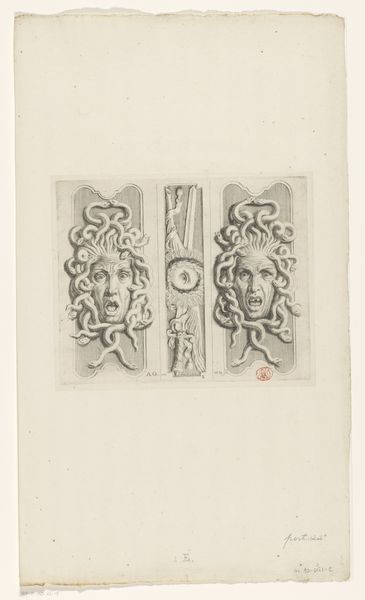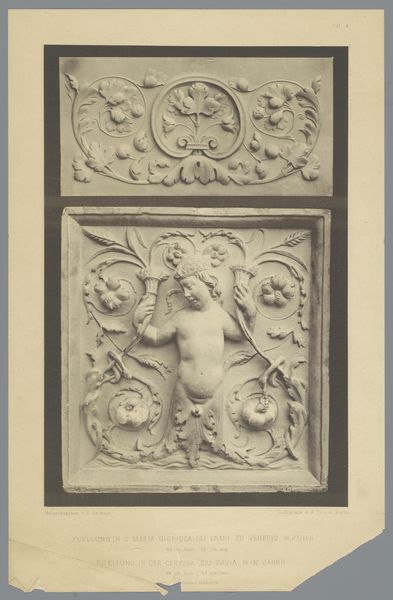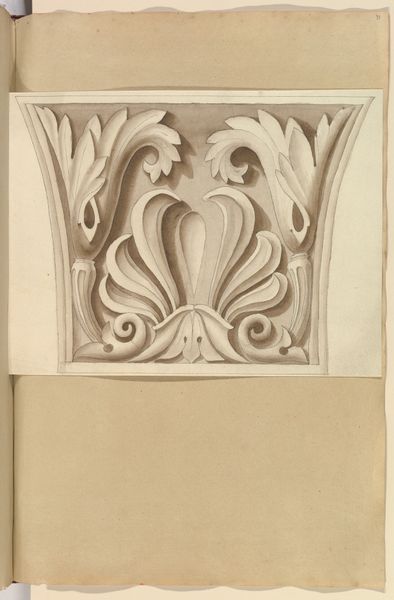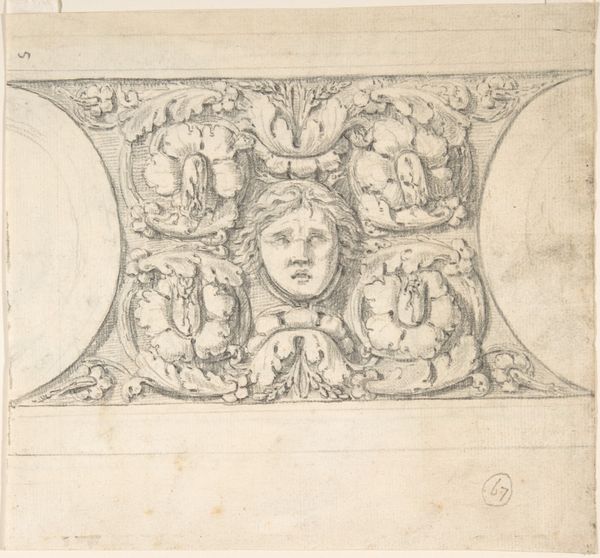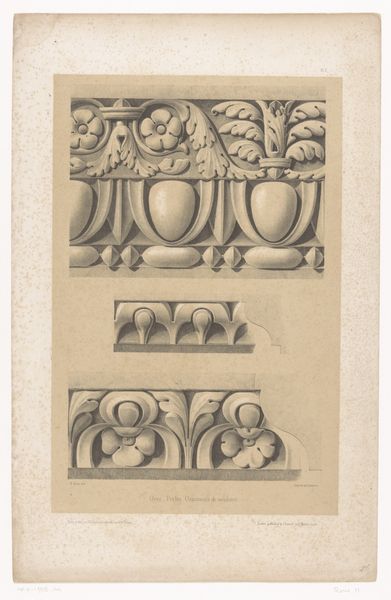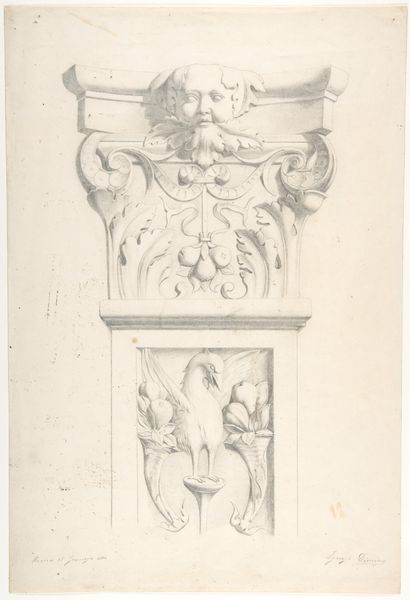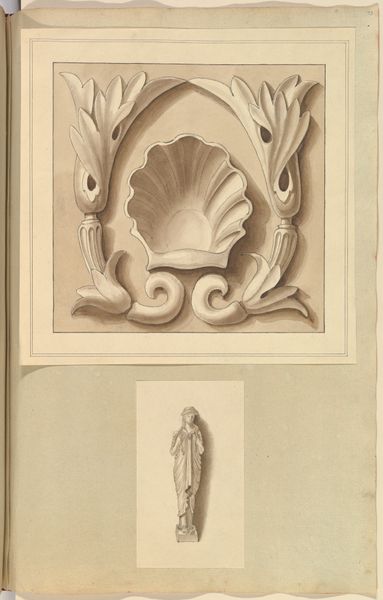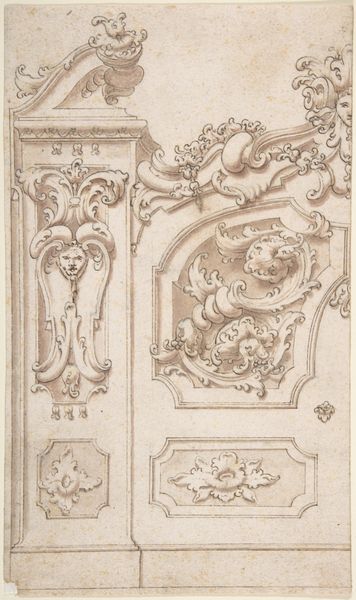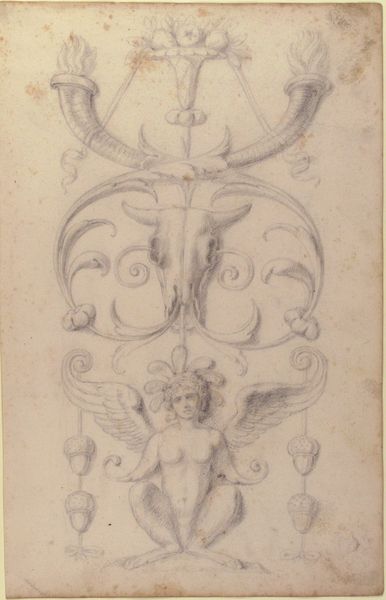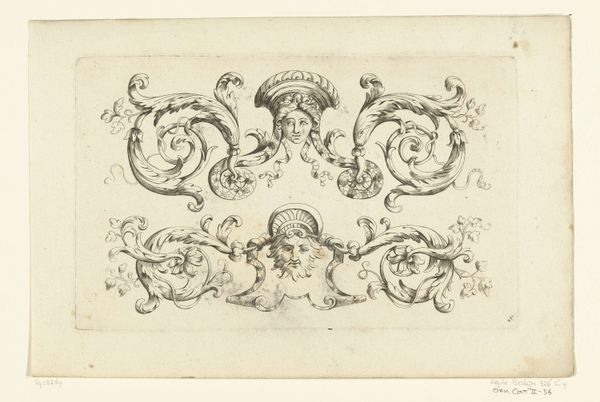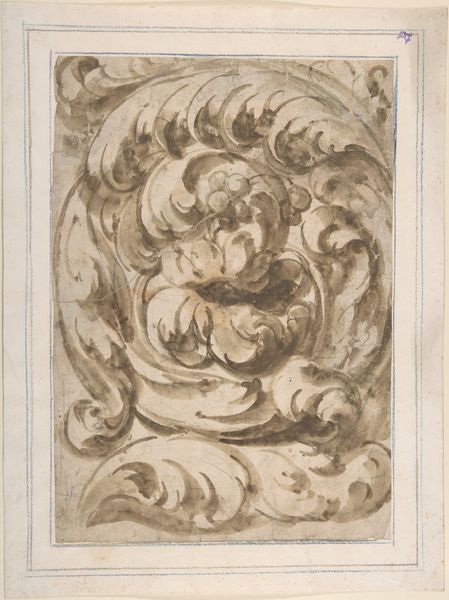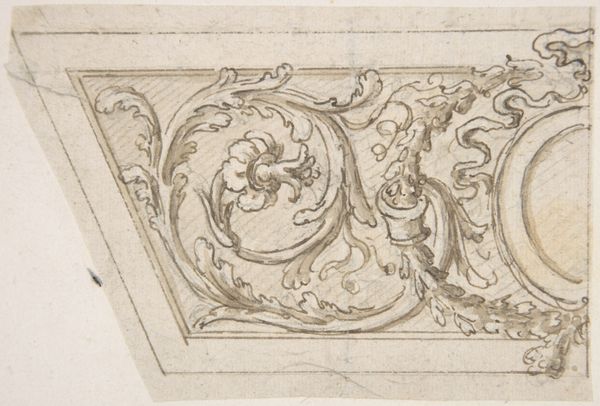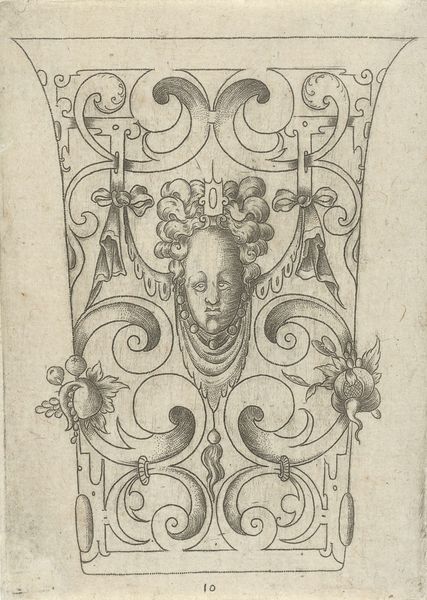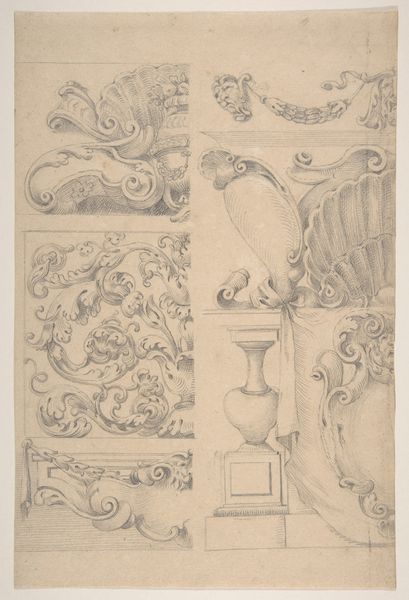
Two Carved Stone Ornamental Panels 1845 - 1870
0:00
0:00
drawing, coloured-pencil, carving, print, relief, sculpture
#
drawing
#
coloured-pencil
#
carving
#
face
# print
#
relief
#
classical-realism
#
coloured pencil
#
sculpture
Dimensions: sheet: 16 3/4 x 11 7/16 in. (42.5 x 29 cm)
Copyright: Public Domain
Curator: This image showcases “Two Carved Stone Ornamental Panels,” dating roughly from 1845 to 1870, held at The Metropolitan Museum of Art. The work is attributed to Alfred Henry Forrester. Editor: My initial reaction is to the formal precision. The panels look so orderly. However, there's something about that central face staring out... it evokes a kind of restrained energy, perhaps reflecting the social restrictions of that era, specifically how patriarchy influences individual expression. Curator: Precisely! The formality you mention aligns with a specific visual language drawn from classical relief sculpture. Observe how the grapevines and acanthus leaves create a deliberate vocabulary. They aren't simply decorative. Vines are potent symbols. We might consider their association with transformation and even divine ecstasy, recalling Bacchus or Dionysus. Editor: The face introduces something different, though. A face flanked by ornate vegetation becomes a focal point in exploring the ways in which society has assigned expectations. The way it is framed brings up issues of marginalization in which identities that diverge from normative models of expression find themselves relegated to the fringe. Curator: Yes, though keep in mind, that these types of motifs, of grotesque masks, were relatively common within classic forms as decorative keystones, linking architectural or decorative aspects of a space together, almost binding it magically. What strikes you most about the face? Its stoicism, or some other attribute? Editor: Its placidity. The impassive expression can reflect the silence enforced on particular identities in various societies. I find myself thinking about feminist theories about societal roles, or queer narratives of invisibility. Is the image then speaking to the experiences of muted figures confined by normative constraints? Curator: It is hard to say if Forrester would have intended those interpretations. He was likely considering standard design language as adapted from classical reliefs when crafting this colored pencil drawing on paper. That isn’t to negate our contemporary understandings, though! Visual vocabularies evolve, and their symbolic implications will change over time as cultural memory shifts. Editor: Absolutely, bringing a socio-political awareness to how aesthetic traditions intersect with lived realities helps bring forward our discourse and challenge past paradigms, ensuring a diverse scope into art understanding. Curator: Thank you, that perspective is so essential for understanding continuity! It allows the dialogue between past and present, offering critical reflection.
Comments
No comments
Be the first to comment and join the conversation on the ultimate creative platform.
